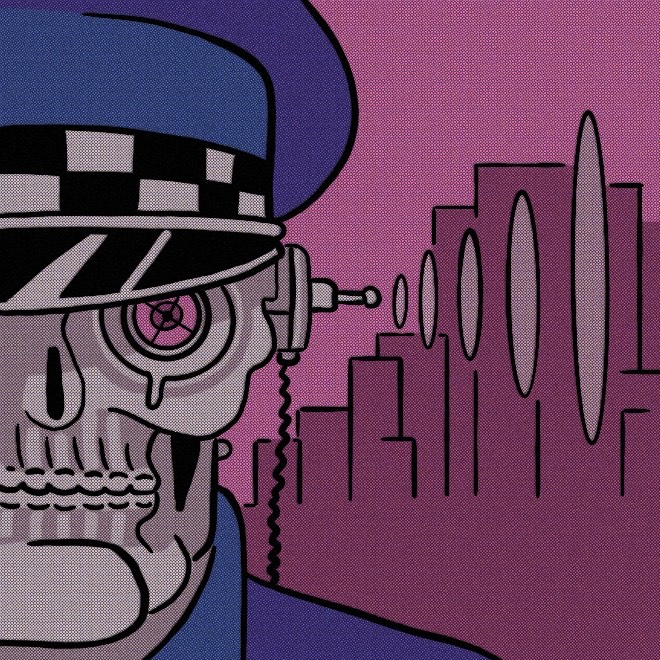Less than five minutes elapsed between the time a ShotSpotter alert summoned police officers to 24th and Sawyer and the moment officer Eric Stillman shot and killed thirteen-year-old Adam Toledo. The automated alert was part of the Chicago Police Department’s sprawling surveillance network of cameras, microphones, social media monitoring, facial recognition software, and a growing constellation of carceral technologies. In August, Chicago’s contract with ShotSpotter is set to expire, and the City should decline to renew it before the technology leads to another fatal encounter with police.
Despite being pitched as tools for public safety, many of these technologies increase criminalization and lead to more interactions with police, which are always dangerous for Black and brown communities. The police killings of young people confirm that CPD’s surveillance system poses a present and growing threat to the safety and lives of Black, brown, and Indigenous Chicagoans. We must work to abolish the use of surveillance technologies to bring justice for Adam Toledo and others like him.
ShotSpotter is a gunshot detection system which uses microphones, algorithms, and human analysts and alerts to send officers to respond to what the system thinks are gunshots. Tellingly, there are no ShotSpotter microphones deployed in majority-white neighborhoods in Chicago. Instead, they blanket the South and West Sides.
By one estimate, more than eighty-five percent of all alerts in Chicago result in no police reports. Few studies have directly measured the accuracy of ShotSpotter, and a San Francisco court has previously found the technology inadmissible as evidence due to concerns about accuracy. Under oath, ShotSpotter representatives stated their accuracy guarantee numbers were “put together by our sales and marketing department, not our engineers.” Despite these problems, police overreliance on this technology has been ineffective and tragic for racialized communities.
Since 2018, Chicago has spent some $33 million on ShotSpotter. As is the case with many surveillance technologies, ShotSpotter is funded through asset forfeiture—money seized through the war on drugs, under a policy that allows police to appropriate and sell property they allege is involved in the commision of a crime. Over five years, the CPD absconded with nearly $47 million from Black and brown people in their neighborhoods and spent it in what a 2016 Reader investigation with Lucy Parsons Labs described as a “secret budget.”
ShotSpotter is only a single part of the surveillance network CPD and the City have built under the guise of public safety. The City similarly claims its automatic license plate readers deter carjackings (carjackings are up); says its gang database is effective (it’s woefully unreliable); promised its Summer Operations Center’s network of cameras and gunshot detectors would deter shootings (gun murders exploded, and the SOC surveilled a school during last year’s protests).
CPD has long promised violence reduction through the use of those and other forms of surveillance like predictive policing and facial recognition technology. The truth is that none of these automated approaches address the root causes of crime—poverty, the criminalization of low-income and marginalized people, and the perverse priorities that divert desperately needed community resources to police budgets.
According to data obtained by the MacArthur Justice Center, officers respond to ShotSpotter alerts in Black and brown communities dozens of times a day. This creates a volatile mix of technology, guns, and racist policing, which in turn leads to unnecessary, dangerous interactions across the city. To make matters worse, Chicago police have a long history of engaging in dangerous and gratuitous foot chases across Chicago, leading to “officers unreasonably shooting someone—often unarmed individuals,” according to the U.S. Department of Justice. In fact, the DOJ’s report on unconstitutional use of force by CPD, released in 2017, specifically recognized foot chases at the very top of its findings.
Mayor Lori Lightfoot campaigned as a police reformer, despite a history of protecting abusive police. In her tenure thus far, Mayor Lightfoot has allowed CPD to miss over seventy percent of deadlines related to the consent decree, a set of changes to policing to which the City has ostensibly agreed.
As abolitionists, we are not fooled by calls to merely modify police policies and procedures, as the mayor has called for finally implementing recommended foot-chase reforms following the killing of Adam Toledo. What communities need is fewer interactions with police, especially punitive interactions that are activated by technology.
Reining in and ultimately abolishing these technologies is critical in preventing more deaths and in bringing justice to Adam Toledo and all others harmed by mass surveillance. We can begin by refusing to renew CPD’s ShotSpotter contract this summer. We can follow the example of other cities and ban the use of facial recognition technologies. We can end the war on drugs and stop the flow of money to CPD’s surveillance technology slush fund.
Justice for our youth requires that we dismantle the technology of militarized policing and build a society based on care, equity, and mutual aid.
Freddy Martinez is the Executive Director of Lucy Parsons Labs. He was born and raised in La Villita. This is his first piece for the Weekly.

